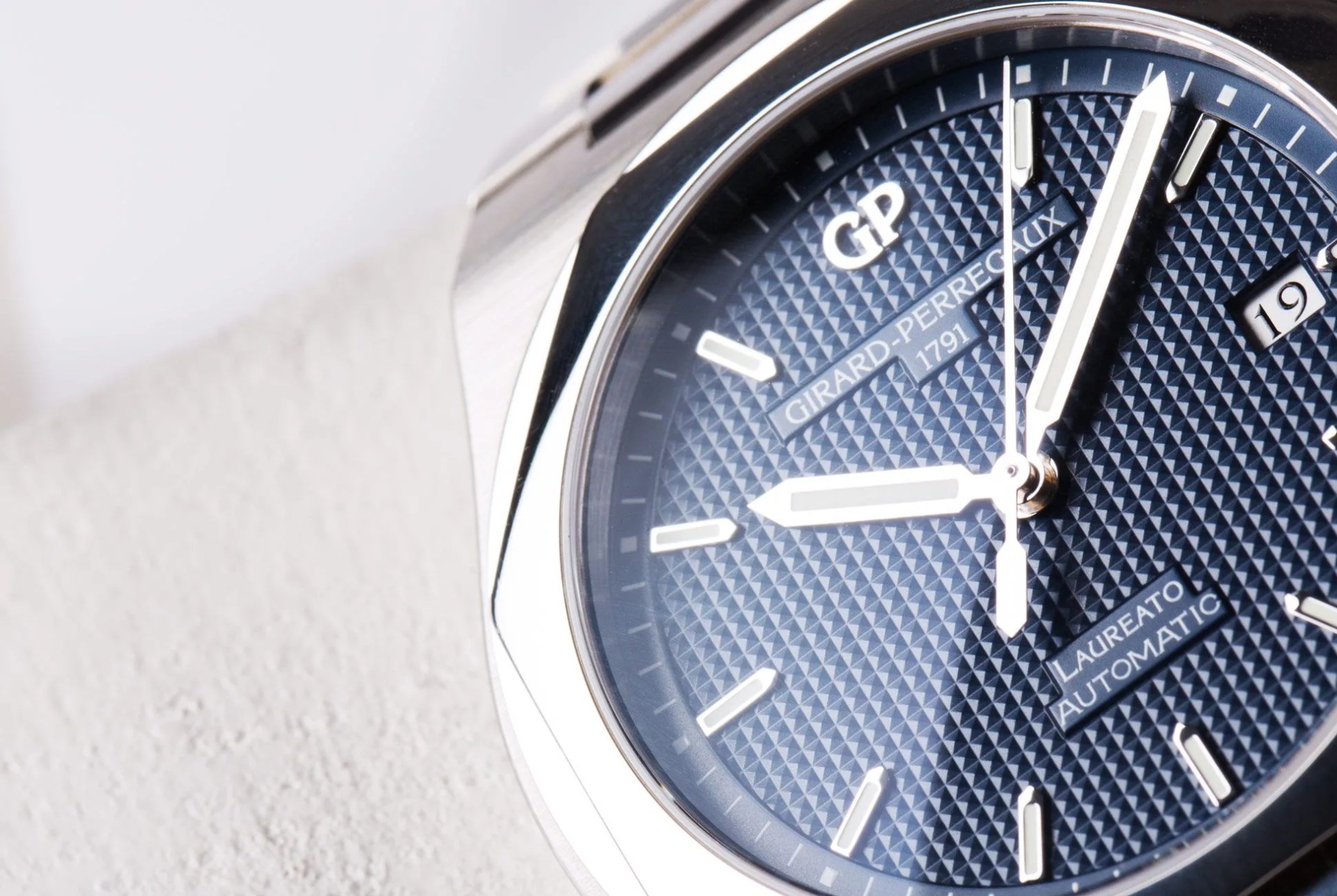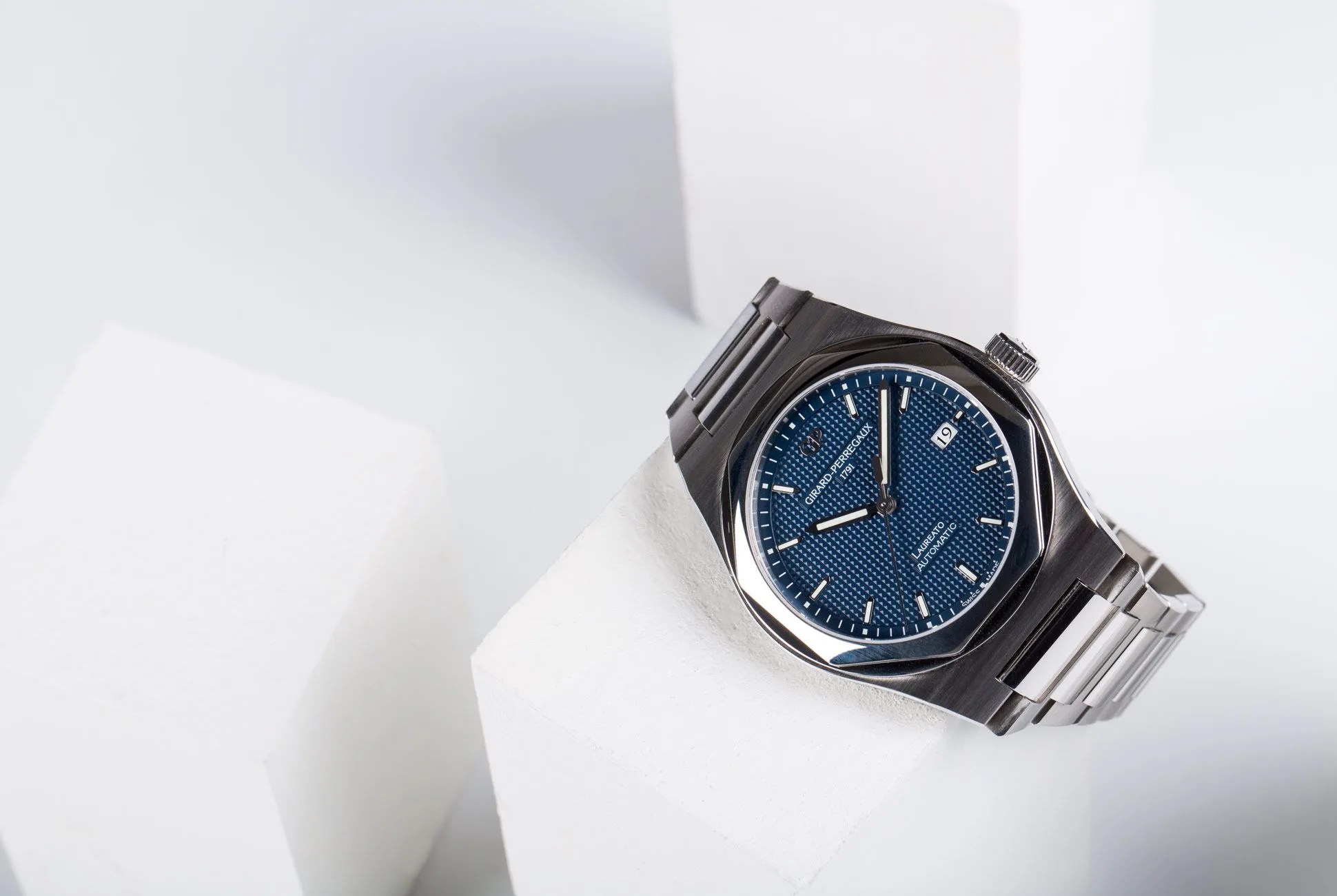Girard-Perregaux doesn’t get much recognition when compared to its long-running contemporaries, the so-called “Big Three” Swiss watchmakers: Audemars Piguet, Patek Philippe and Vacheron Constantin. It’s stiff competition, sure. But GP’s been a Swiss watchmaking institution for 225 years and has long mastered the art of horology; in 2013 its Constant Escapement took top prize at the Grand Prix d’Horologerie. The company was even an innovator of quartz during the late ’60s and early ’70s. At Baselworld 1970, it released the Caliber 350 — not its first quartz movement, but the first in the industry to operate at a frequency of 32,768 Hz, making it four times more accurate than any other quartz watch of the time and increasing battery life, to boot. It eventually became the standard for all quartz watches.
Around this time, Audemars Piguet debuted the now-iconic Royal Oak. Angular, luxurious, cast in stainless steel, packing a thin automatic movement and designed by Gérald Genta, the Royal Oak ushered in an era of stainless steel luxury watches from high-end Swiss watchmakers, including the Patek Philippe Nautilus and Vacheron Constantin 222 (now the Overseas). In 1975, GP launched its own funky-shaped sports watch, the Laureato (a name supposedly inspired by the Italian title of The Graduate, Il Laureato). Unlike the Royal Oak, it was powered by a super-accurate quartz movement. For GP’s 225th birthday, the Laureato has been revived, now with a mechanical movement.
The Calibre 3300 inside is a real gem — it’s an automatic three-hander, with a date complication and a 46-hour power reserve, beating at a frequency of 28,800 vpm. And at only 3.2mm thick, it’s one of the thinnest automatic three-handers on the market (for reference, NOMOS’s DUW 3001 comes in at the same thickness), which allowed GP to keep the case svelte as well; it’s only 41mm in diameter and 10mm thick.

Like most stainless steel sport watches from the original’s era, the Laureato’s geometric design seamlessly incorporates the bracelet into the rest of the case. It has a whiff of Royal Oak to it, a result of the octagonal bezel; but whereas the Royal Oak’s bezel is altogether more conspicuous, with its thick shape and exposed screw heads, the thinner bezel on the GP feels more discrete. With its thin, rounded case shape, the Laureato feels, overall, softer and more elegant than the brasher AP. And because of some excellent case finishing — a lovely polish for the bezel and a brushed satin look on the rest of the case — the Laureato feels equally at home under a suit jacket cuff or with casual weekend attire. The Clau du Paris textured dial is an excellent touch, too.
There’s one big issue: the price. Coming in at $14,300, the Laureato undercuts similar watches like the Royal Oak and Vacheron Overseas by a couple thousand dollars. But, while the GP’s movement is lovely, the Royal Oak’s and Overseas’s movements have even nicer finishing (specifically, both have 22k gold rotors). As far as ruggedness goes, the Laureato’s 30-meter water resistance feels lacking for what is ostensibly a sports watch — it’s also overshadowed by the AP’s 50 meters and the creamed by the Vacheron’s 150 meters. Further hurting its case is its lack of name recognition on the level of the Big Three watchmakers.
Much more damning is the fact that GP’s all-steel version of the 1966, which uses the same movement as the Laureato, comes in at $6,100 less. Granted, the Laureato is a limited edition — only 225 blue-dial and 225 white-dial versions are available as of now — but does that justify such a leap in price?
